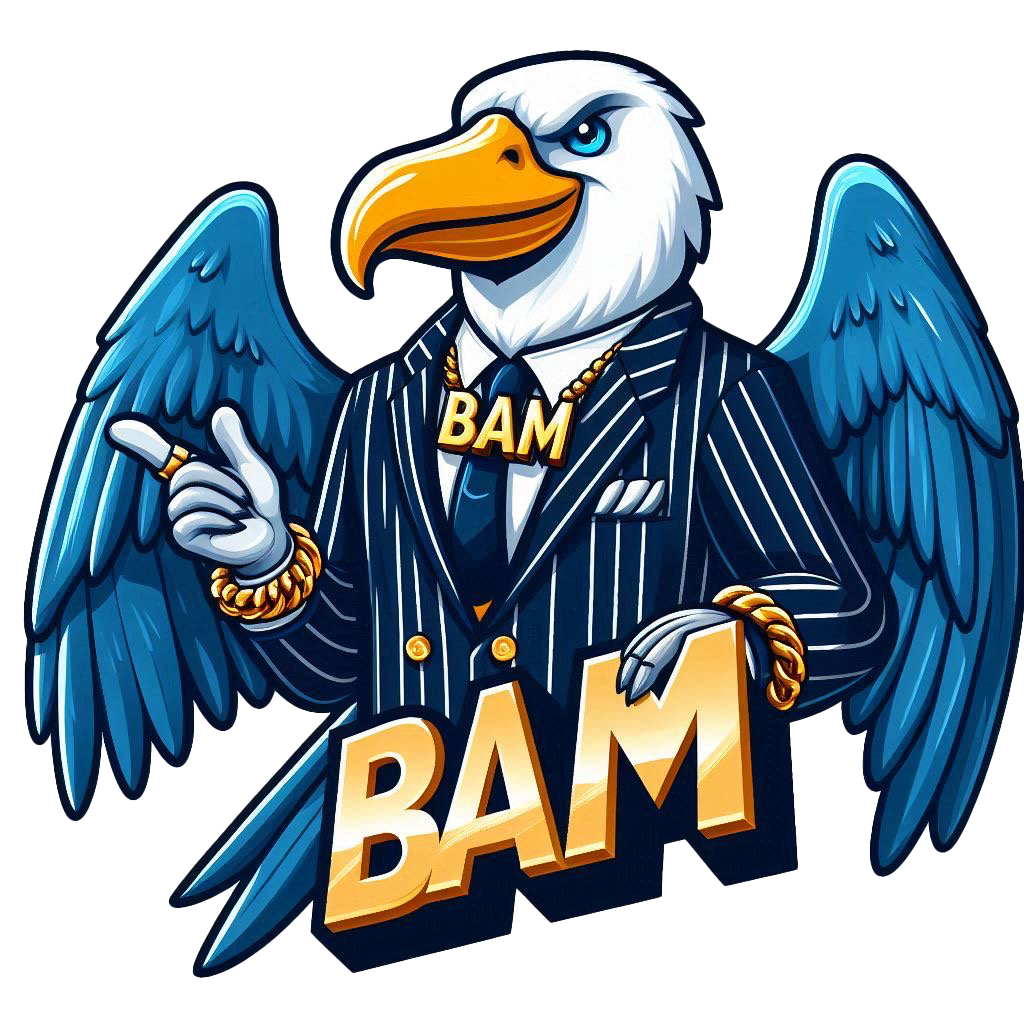BLUE ALBATROSS MEDIA in-house Marketing & Branding departments are always available to help your business or brand 24 hours a day. Our Branding dept. is INCUBATED BRANDS. Our Marketing dept. is LONGFLIGHT MARKETING. Both departments operate independently, but rarely do. Together they are our dynamic duo and your new besties in business. INCUBATED BRANDS helps establish your brand’s identity and LONGFLIGHT MARKETING gives it a voice that resonates with your targeted audience.
What is Branding?

Since the days of barter and trade, there has always been more than one person providing the same service or business. When more than one person Is selling the same thing, there has to be something distinctive that sets them apart. In order for organizations to make their products or services stand out from the competition, businesses needed a distinguishable name. That name is what we call Branding.
Branding is giving your product or service a life: a voice, character and personality, so that it stands out from the competition. Marketing involves how you reach them. By creating Brands, consumers were given more than a product, but an identity or personality to buy into. These products come with their own logos, colors, jingles, taglines, music and voice that specifically targets their consumer’s mindset. A Brand is only as good as its marketing.
What is Marketing?
Marketing is “how” you convey your brand’s voice. It’s the things you do to reach your customers and how you reach new ones. After people began “branding” their products to distinguish them from their neighbors, they needed a way to convey their differentiation …
Ex: if we were both selling cattle at the same price and we both branded our meat; something else is required to help people decide on which one will make them either repeat or long-term customers. That thing missing is Marketing. It’s how you make people remember your cattle over mine when they decide to buy cattle.

What is the difference between Branding & Marketing?


Why do we need Branding?
In the mid-19th Century, citizens in Western societies were about to make purchases not out of necessity for the first time. This permitted the consumer to make choices in the products and services they purchased. This also forced manufacturers and producers to establish identities as a business and find creative solutions to targeting consumers. Coca Cola, launched in 1886 separated itself by putting its name in a distinctive script. Quaker Oats, beginning roughly around the same time, advertised with a man dressed in Quaker clothing. These things would allow the companies to individualize themselves from competition and simultaneously establish a long-term footprint in the consumer’s mind.
Branding is what creates the long lines around the block. It’s why we wait on waiting list for years and proudly pledge life-long loyalties to entities: allowing Brands to benefit from the next generations, as they inherit the behaviors and lifestyles of their predecessors. Branding is required in order to obtain a seat at the Business table. The only alternatives, if you’re attempting to play it safe, is either be an investor/ silent partner or work for someone else.
“Products are made in the factory, but brands are created in the mind.” – Walter Landor
What are some essential elements of Branding?
Brand Strategy– the tactical side of Branding. It is what separates your business from everyone else. It defines the purpose of your Brand; identifies potential customers, establishes your brand’s voice and personality. Your Brand strategy helps establishes trust, thus imprinting itself into the long-term memory of consumers.
Brand Identity – establishes who you are as a brand. It gives your brand a look, message, theme and/or a story. This allows your brand to create visuals that resonate and have values. Your Brand identity involves having a consistent theme and messaging throughout your entire campaign.
Brand Marketing – is the how, after the culmination of brand strategy and Brand identity. Where, When and How to convey a particular voice that speaks directly to your targeted consumer. It’s how to reach them and how to cause immediate impact. These targets could include a specific audience and those curious to your particular field.
Brand Positioning – is the strategic application of marketing in order to have your Brand seen by its intended audience. Your Brand positioning involves analytical detail of exactly who your target audience is and anticipating where you need to be in order to maximize your visibility.
Brand Awareness – is the level of visibility of a brand. All brands require a level of visibility, and the size of your Brand depends on that awareness. Knowing who your audience is, how to target your audience and how to push them to action; will be the foundation of building your Brand’s awareness.
A Brand can be a corporate, product, service or person.


Branding and Consistency:
When branding: your brand identity must be consistent and constantly conveyed in a recognizable tone. This resonates with your precise audience and establishes the trust that allows them to become regular consumers.
In branding, your brand identity is hugely based upon its marketing. All products and services marketed or offered must equally mirror the voice of the brand. This establishes familiarity with products, services and lifestyles associated with your particular brand or business.
Consumer experience is a huge part of branding. Customers buy brands as a part of lifestyles and their experience with your brand derived from trust, thus establishing an intimate relationship. This would explain our lifelong dedication to specific brands, even though the alternatives could be more economically advantageous.
Our association with brands and our zealous brand loyalty is centered around the consumer’s experience with your particular brand. If the consumer can associate your brand with a positive experience or emotional state, then that customer will be five times more effective at promoting your brand than an employee.
All brands, in their intrinsic state are patterns of consistent awareness. The consumer mind requires constant retargeting and reminders of a brand’s stability and purpose.
The first several times potential customers see your visuals; they will ignore it. After repetitive reassurance of legitimacy, through brand positioning; familiarity sets in, trust is established, and customers are made. It’s only through the process of repetitive visuals, sounds and how it connects to their emotional states- that consumers begin to identify brands and subconsciously pledge their undying loyalty.

How do you create a Brand?
Creating a Brand is not easy but when done right, it’s rewards far outweigh the labor. Getting a logo, Domain and website is to some extent commendable but it falls short on qualifying as a prerequisite of establishing a Brand. Yes, all three are required but they are only the start. The tip of the iceberg. Branding, like most things in existence, begins with just an idea.
This idea and everything it encompass, has to be principled on a unique difference. What if the same product is sold blocks away or even across the street? What separates you apart from them? The answer to the question is also your businesses solution. Branding! How you Brand, will determine how well you resonate with consumers.
Flo from Progressive Insurance was a highly effective Marketing & Branding Campaign. As was the Gecko from Geico, Jake from State Farm, Dana Kilpatrick for GoDaddy and many others. Branding played essential roles in allowing those companies to thrive. Humor goes a long way in advertising. This, if properly done, subdues the listener into a state more receptive of your message. If you are entering the world of Branding, be prepared to have an USP.


Incubated Brands
What is an USP?
A USP is a Unique Selling Proposition. An integral part of your Brand’s strategy, Brand identity and Brand marketing will revolve around your unique selling proposition. This is what will make your product or service stand out from the competition.
Should a Brand have Values?
Woven into every fabric of your Brand is its values. This will resonate within a targeted frequency, in all your Business or Brands services, including messages, ads, emails, products, behavior and appearances. Brand Identity covers establishing values for your Brand. Your Business or Brand should stand for something and be able to identify with its consumers. Your USP should encompass this.
When read or quoted, it should reflect everything your Business or Brand is about. Consistently. Providing value and building communities. Inspiring consumers to action and simultaneously looking forward.

Are you prepared to take your brand to new heights?
Let’s start today!
We’re here to accelerate your vision forward to fruition. Contact us via email, phone call, or office visit and witness our unparalleled Albatross Approach™.
How to name a Business or Brand
As you may have already learned, there are many levels to how to name a Business or Brand. With so many factors/variables to consider, you may be asking-where do you start? Naming a Business Is more than what sounds good to you as an individual. You aren’t the consumer. Your target audience isn’t you. Consumers dictate what becomes popular. If something is too difficult to say, people won’t say it but if it’s clever, witty, unique or memorable, people will be open to learning more.
You want people to discuss your Brand, so eliminate the complex names if possible. A great example of Branding is when you think a photo has been altered. The first thing people will shout is “That’s Photoshopped.” Photoshop is one of many products that Adobe owns and one of hundreds of photo editing software, but proper Branding has allowed its name to become imbedded in our minds as an adjective for doctored pictures. Remember: Difficult to say names are rarely mentioned and equally difficult to Brand.
One or two words, maybe a combination of two and forward thinking. This is pretty much the new standard format. Also, don’t limit your future growth or market expansion by adding geographical (“Cleveland” Burgers, instead of Burger Land) or category words (Bob’s “Tire”, instead of Bob’s auto service). A lesson learned by Burlington Coat factory, who in a rare Branding feat; successfully expanded on a Categorized name.
Your name should be memorable; either invoking an emotion, agitating someone’s thought process or inspiring.

Finding a Market in the Gap.
What is a “Gap”? A Gap is a space in the market that is either unchallenged or has very little competition.
Benefits of finding a gap in the market
- Industry control over prices
- Lower Expenses
- Larger margin for profit
- Leader in Industry
(If there is already a Product) … do this
When naming a product or brand after something already exist (prototype, start-up, market testing Rebranding) then I try to utilize the actual product for creativity. If it is an operational or edible, tangible product (bed, perfume, toy, household cleaner, food, clothing) then I use it and capture the immediate reactions in words. Also, if it’s edible; think about how you would describe it over the phone.
How would you describe it to a blind person? (if it’s edible) have others eat and try it too. Give away samples to strangers. They have nothing to lose, so you’ll receive honest feedback. Everyone’s vocabulary is different so, hearing as many opinions as possible helps. You’ll hear many great words perfect for naming a Business or Brand. Adding any of these with a word from utilizing it and you’ll start crafting Brandable words. They are sometimes called a portmanteau. This is how you birth a completely original Brand name: Shopify, Netflix, Cricut, and Pinterest are perfect examples.
When you think of something as being chewy, most people don’t feel inclined to want to either eat it again or try it. But Ryan Cohen had the genius idea of making it into a Brandable word. Proving that if it’s fun, memorable and familiar, it can be Branded. Hence, Chewy.com. (later sold to PetSmart for 3.35 billion)
If it is a Business or organization: I would use our businesses mission statement as starting point. Having your Brand or Business name, theme, purpose and public perception, all align is idea.
What are some words to describe the product? How you utilize the product can help tremendously with naming a Business. Some names will directly correlate to the product; like PayPal, Reddit, Lyft or DoorDash.
“We started with a vision of a computer on every desk and in every home… every day, we’re finding new ways for technology to enhance and enrich people’s lives. We’re really only just getting started”
-Bill Gates

… then this…Have strangers hear it
This is where your most honest feedback will happen. Strangers have nothing to lose. They aren’t worried about your feelings, sales, or Business and in this instance, you want brutally honest criticism. This helps you identify problems early, eliminating things that could cost you later. There’s good reason to have people that you don’t know be the judge if you want to see where your flaws are. Mainly because People love to be a critic and have decisions made based on their opinion.
If it’s a product that kids can use; have them review it for the most accurate descriptions of your product or Brand. If it’s only for adults, then strangers are the best option. Giving free samples for genuine feedback will probably yield you roughly the same results as surveys or focus groups. There are variables that can unfairly alter the outcome of any study. For example, if my study were on how many nights a week that families ate homemade mozzarella, it would matter whether I only asked Italian families, or if I asked families of all nationalities. So, even if you only plan on catering to one demographic only, (Rich lonely housewife, Single high-income men, etc.) diversify your testing audience to find angles on your product that you didn’t consider.

Types of names for your Business or Brand
- Brandable:
Single word or combination of words to form a new word. These are the more popular way to go. No one else will have your name and the combination or recognizable words will draw curiosity. Just make sure the name fits your business model. More than 50% of new Companies/Brands are picking Single words or a Name (Skims, Dell, Barbie) or a combination to form their Brandable name, like (Lime, LinkedIn, Grubhub, Coinbase, SnapChat).
- Direct/Geo Names:
These names are directly a result of sometimes combining the Business purpose and its geographical location or your own name: Anderson welding, Burlington Coat Factory, Cash App). Unmistakably unique and like a Brandable name; you will have your own lane.
In addition to that, your specific customers will be able to easily identify your Brand. The only drawback is, if you are too specific, It may require some Rebranding before you expand. Minnesota Mining and Manufacturing experienced this and is now just 3M. Many companies have had to expand vastly beyond their initial Brand voice. (Arby’s, T-Mobile, Kroger, nearly everyone in Business over a decade).
- Generic:
Generic names are direct but common in everyday speech. They have no room to assume their purpose or meaning. Examples include: Apple, Rose,
- Acronyms:
Acronym domains are usually a combination of letters representing the business or brand name. Examples include: JTM, ABC, NBC, CBS, MTV
- Numeric:
Numeric brand names are simply conveyed in numbers and are very popular. Brand named after area codes, based on geographic locations has a very high number of numeric brand names.
- Alphanumeric:
Alphanumeric Brand names contain letters and numbers.
Keep it Short and Sweet
Your Business or Brands name should not be a verbal exercise. It shouldn’t frustrate nor confuse those attempting to pronounce it. You want your customers to be able to see and recognize your Brand, then say its name with ease.
Long names are difficult to advertise on radio and annoying to type out in a search bar. They also force people to ask, “How do I spell that?” or not try altogether. Names that are short and Brandable are easy to put on merchandise. It not easy to align a memorable 20+ letter Brand name on a shirt or packaging. To increase the likelihood of people saying it, minimize the name a bit.
In a 1920 ad “The History of a word”, when referencing George Eastman’s Iconic Brand KODAK, is says the name was “…short, euphonious and likely to stick in the public mind.” This is still the go to formula for learning how to name a Business or Brand.
Consider Foreign Markets
When deciding how to name a Business or Brand, consider other cultures and languages. Your name in one country means something different in another. You don’t want to expand and enter a new market where you are actually insulting the people. It’s not good Business to mimic or make fun of someone else’s culture/lifestyle either. Thorough research should be done. It has happened before to several big Brands, who has the money and resources to withstand such challenges but most likely, you have neither of those luxuries.
Consider all possibilities when trying to find a name for your Business or Brand. Some words may be already used in another language or even banned. Also, type the name out in different languages to see how it looks. It should be aesthetically pleasing when you see it and auditorily attractive when heard. These names are easy to become trendy because it’s easy to say, look at and hear. Keep that in mind when deciding on a name for your Business or Brand.

Remember, you are a visual representation of your brand.

Dissection of a Brand:
If there is no product, nor Business yet established; start with your purpose. Ask yourself, why are you there? The passion that lead you to starting the Business should reverberate in the distance, every time you speak of your Business or Brand. If you remember your purpose of this mission, then naming the Business or Brand is much easier. Like Progressive. Their policies may or may not be progressive for their industry, but their marketing and advertising definitely is.
What do you offer that no one else has? This is where you separate yourself from the crowd. Someone was already offering something similar, why try yours? You should be ready to distinguish yourself from competition from day one. In Business, Advertising, Branding and presentations: should all set you apart from your competitors.
How is your Business different than others, offering the same service? If Harry does my Dry Cleaning for 40 Bucks and I’ve never had a problem with his service; then it would be 10x harder for you to get me to stop being a patron his establishment. This even if you offer Dry Cleaning at 35 bucks. Something has to be different. Your energy, sense of humor, style or even service; but it has to stand out.
This is very helpful when considering names. Picking the wrong one can hurt your Business or Brand as well.
“The brand stands out because its positive differences from the competition are clear.”
Do Research:
When deciding through names for your Business or Brand, have your phone or computer nearby. As you are picking names that you like, you should be searching the trademark and patent list. This keeps you from picking a name or phrase that someone already has exclusive rights to. You can be sued and let’s face it; nobody wants that.
This isn’t the only reason to be close to a search engine, you also need to see where else online the name is used. The last thing you want is to name your Organization, Business or Brand; only to find out that it’s the same name as an adult site. This is not idea when Branding, nor will it work if you’re starting a religious organization.
There is no trick to learning how to name your Business or Brand. Just thorough research, creativity, test and feedback. Some will develop a name in minutes, others may take a while. No Business, Brand or Organization’s progress will be the same. When you decide on a name, research it’s meaning. Not what it means today but original meaning. If it were used to spread hate or injustice, it could come back to bite your Business or Brand.
Domain(s):
It is extremely important to try and acquire the corresponding Domain name to your Organization, Business or Brand. This can save you millions of dollars if your Brand goes global. The popular app Clubhouse, just paid 20 million dollars for clubhouse.com. This was because they launched under a different Domain and once their popularity skyrocketed; so did the price. To avoid this, get your Domain early and make sure it’s the one you want.
Domains are a hot ticket item that most of America still hasn’t caught on to yet. You want a Domain that people can read. If they look at it and can’t read it, then they probably can’t spell it. You customers can’t visit your website if they can’t spell the name. These are important elements to consider when trying to name your Business or Brand. The Domain is a huge part of your online presence and the traffic that it’ll generate. Be as selective with picking your Domain as you are with the actual Business name.
Make sure your Business name and Domain name are identical if possible. Tesla learned this the hard way and was forced to go with TeslaMotors.com instead of Tesla.com when they first started. They now own Tesla.com
Tagline:
What’s your catch phrase to hook in your idea customers and pique the interest of the curious? Nike has “Just do it”, which everyone in the world recognizes. You could possibly start with the tagline. There is no right or wrong way to name your Business or Brand. This may lead to giving you an idea for the name you were searching for.
When creating a tagline, keep it simple but memorable. You want people to remember you. It can be their motivation, which then gives your Brand permanent residency in their memory. Be witty if your audience would get it. For instance, if you were a financial advisor; you’d maintain a serious tone, because it’ll resonate better. No one wants to trust their money with someone who doesn’t seem serious.
There’s no singular, “right way” to Branding. There’s is what worked for others. These are to be used as guides. No results will be identical, even will you follow all the steps. There will always be variables. The time period is different, rules/regulations change, Industries fade, new technology emerges, so on and so forth.
What are the people doing? What are they researching and looking at?
If you follow what excites people, what they spend money on, who gets their attention and figure out the why to those questions; you’ll be able to easily name and build a huge following around your product(s), organization or Brand.
Learning how to name a Business or Brand can be made into a simple process, actually developing the Brand is the fun part. The research, the data, the studying, reading, sleepless nights, the rejections, lack of support and funding and then boom, Success! That’s the beautiful side to learning how to name a Brand or Business.

LongFlight Marketing

What is a Marketing Strategy?
A process that allows a business to concentrate its resources on the greatest opportunities to increase sales & simultaneously achieve a sustainable competitive advantage.
A Marketing Strategy answers key questions.

What are our advantages/disadvantages?
Where should we be?
How do we get there?
Who is our competition?
Where are we in the market?
